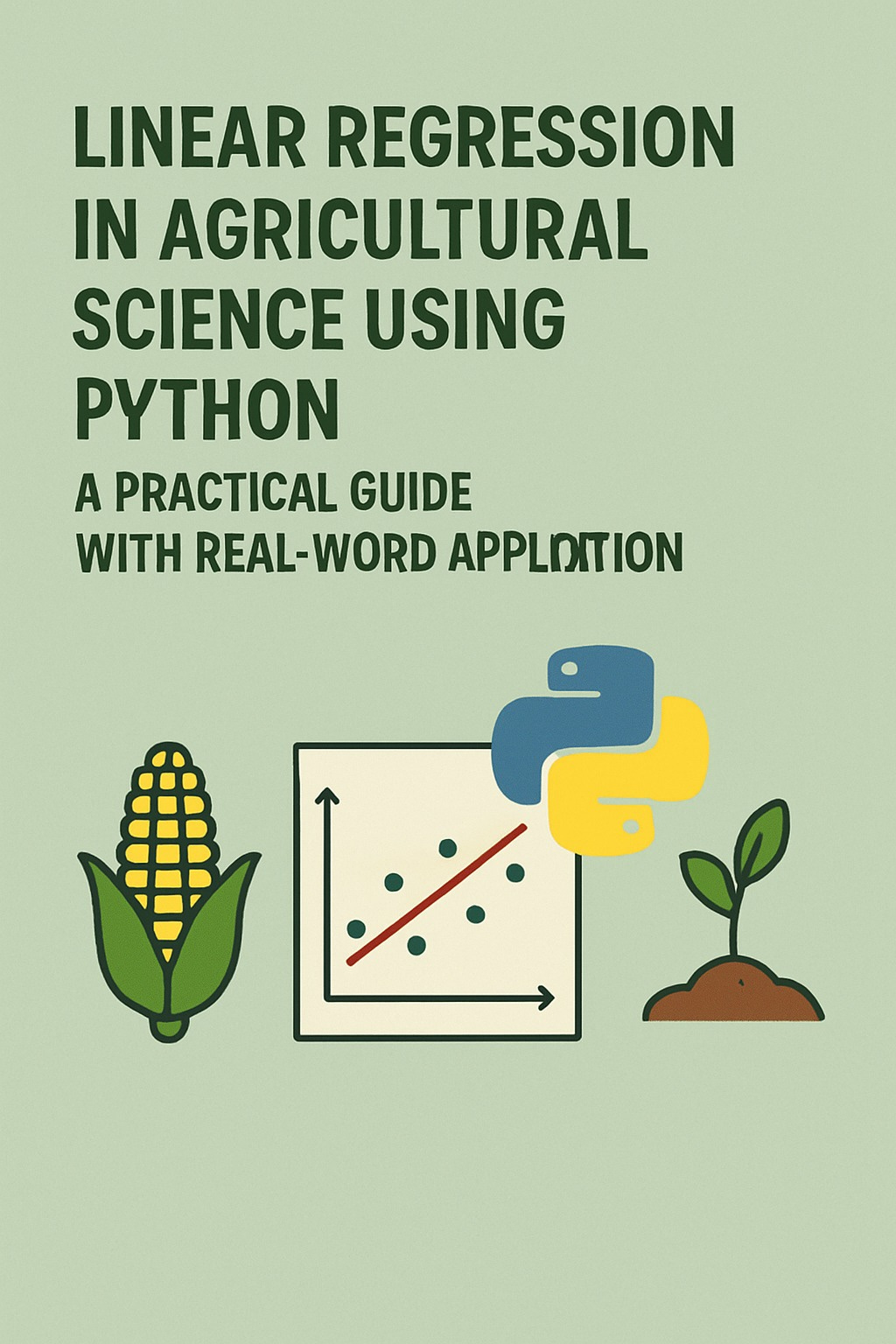Linear Regression in Agricultural Science Using Python: A Practical Guide with Real-World Application
By working through this article, you’ll gain a clear understanding of how to apply linear regression in Python to analyse agricultural relationships—such as the effect of fertiliser on crop yield—and learn how to interpret, evaluate, and act on the results for real-world agricultural decision-making.
Introduction
Agriculture has always been an industry deeply tied to data—whether it's in the form of rainfall patterns, soil characteristics, crop yields, or input costs. However, with the rise of modern computing tools and digital agriculture, the ability to analyze and act upon this data has improved dramatically. Among the most useful tools in this data-driven revolution is linear regression, a statistical method for modeling relationships between variables.
In this article, we explore how linear regression can be applied in the context of agricultural science, particularly using Python. We’ll walk through a real-world inspired example of predicting wheat yield based on fertilizer application. By the end of this article, you'll be equipped with the skills to build, evaluate, and interpret a simple regression model for agricultural decision-making.
Understanding Linear Regression in Agricultural Context
What Is Linear Regression?
Linear regression is one of the most fundamental techniques in statistics and machine learning. It is used to model the linear relationship between a dependent variable (target) and one or more independent variables (features).
In its simplest form (simple linear regression), the equation looks like this:
Y=β0+β1X+εY=β0+β1X+ε
Where:
( Y ) is the predicted value (e.g., crop yield)
( X ) is the input variable (e.g., fertilizer amount)
( \beta_0 ) is the intercept
( \beta_1 ) is the slope of the regression line
( \varepsilon ) is the random error term
Applications in Agricultural Science
Linear regression has numerous use cases in agriculture, including:
Predicting crop yield from input variables like fertilizer or irrigation
Estimating livestock weight gain based on feed
Analyzing pesticide efficiency on pest reduction
Modeling plant growth based on sunlight or temperature exposure
Keep reading with a 7-day free trial
Subscribe to AI, Analytics & Data Science: Towards Analytics Specialist to keep reading this post and get 7 days of free access to the full post archives.




